
Ida, minor planet designation 243 Ida, is an asteroid in the Koronis family of the asteroid belt. It was discovered on 29 September 1884 by Austrian astronomer Johann Palisa at Vienna Observatory and named after a nymph from Greek mythology. Later telescopic observations categorized Ida as an S-type asteroid, the most numerous type in the inner asteroid belt. On 28 August 1993, Ida was visited by the uncrewed Galileo spacecraft while en route to Jupiter. It was the second asteroid visited by a spacecraft and the first found to have a natural satellite.
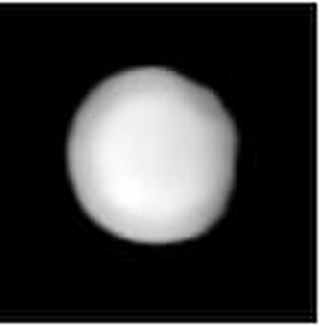
Flora is a large, bright main-belt asteroid. It is the innermost large asteroid: no asteroid closer to the Sun has a diameter above 25 kilometres, and not until 20-km 149 Medusa was discovered was an asteroid known to orbit at a closer mean distance. It is the seventh-brightest asteroid with a mean opposition magnitude of +8.7. Flora can reach a magnitude of +8.1 at a favorable opposition near perihelion, such as occurred in November 2020 when it was 0.88 AU from Earth.
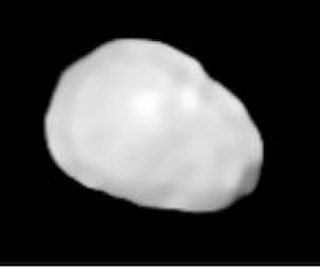
Eunomia is a very large asteroid in the middle asteroid belt. It is the largest of the stony (S-type) asteroids, with 3 Juno as a close second. It is quite a massive asteroid, in 6th to 8th place. It is the largest Eunomian asteroid, and is estimated to contain 1% of the mass of the asteroid belt.

Ariadne is a fairly large and bright main-belt asteroid. It is the second-largest member of the Flora asteroid family. It was discovered by N. R. Pogson on 15 April 1857 and named after the Greek heroine Ariadne.
The Eunomia or Eunomian family is a large asteroid family of S-type asteroids named after the asteroid 15 Eunomia. It is the most prominent family in the intermediate asteroid belt and the 6th-largest family with nearly six thousand known members, or approximately 1.4% of all asteroids in the asteroid belt.
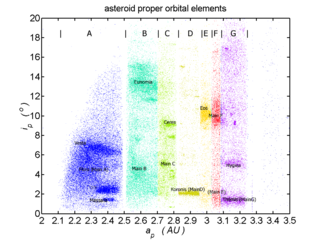
An asteroid family is a population of asteroids that share similar proper orbital elements, such as semimajor axis, eccentricity, and orbital inclination. The members of the families are thought to be fragments of past asteroid collisions. An asteroid family is a more specific term than asteroid group whose members, while sharing some broad orbital characteristics, may be otherwise unrelated to each other.
The Themis family is a family of carbonaceous asteroids located in the outer portion of the asteroid belt, at a mean distance of 3.13 AU from the Sun. It is one of the largest families with over 4700 known members, and consists of a well-defined core of larger bodies surrounded by a region of smaller ones. The collisional Themis family is named after its parent body, the asteroid 24 Themis, discovered on 5 April 1853 by Italian astronomer Annibale de Gasparis.
The Vesta family is a family of asteroids. The cratering family is located in the inner asteroid belt in the vicinity of its namesake and principal body, 4 Vesta. It is one of the largest asteroid families with more than 15,000 known members and consists of mostly bright V-type asteroids, so-called "vestoids".
The Eos family is a very large asteroid family located in the outer region of the asteroid belt. The family of K-type asteroids is believed to have formed as a result of an ancient catastrophic collision. The family's parent body is the asteroid 221 Eos.
The Karin family or Karin cluster is an asteroid family and sub-group of the Koronis family. It consists of at least 90 main-belt asteroids. What makes them special is that scientists have used the orbits of 13 members to calculate backwards until they were all found to share the same orbit — that of the parent body from which they all originated.
The Gefion family is an asteroid family located in the intermediate asteroid belt between 2.74 and 2.82 AU at inclinations of 7.4° to 10.5°. The family of S-type asteroids is named after 1272 Gefion and consists of more than 2,500 known members. It had previously been known as the Ceres family. It is still known as Minerva family, named after then thought parent body 93 Minerva, until it was identified to be an interloper into its own family.
929 Algunde, is a stony Flora asteroid from the inner regions of the asteroid belt, that measures approximately 11 kilometers in diameter. It was discovered by German astronomer Karl Reinmuth at the Heidelberg-Königstuhl State Observatory on 10 March 1920. The S-type asteroid has a short rotation period of 3.3 hours and is likely spherical in shape. It was named "Algunde", a common German female name unrelated to the discoverer's contemporaries, that was taken from the almanac Lahrer Hinkender Bote.
956 Elisa is a Flora asteroid from the inner regions of the asteroid belt, approximately 10.5 kilometers in diameter. It was discovered on 8 August 1921, by German astronomer Karl Reinmuth at the Heidelberg Observatory. The V-type asteroid has a rotation period of 16.5 hours. It was named after Elisa Reinmuth, mother of the discoverer.
The Hygiea or Hygieanfamily is a grouping of dark, carbonaceous C-type and B-type asteroids in outer asteroid belt, the largest member of which is 10 Hygiea. About 1% of all known asteroids in the asteroid belt belong to this family.
The Massalia family is a family of asteroids in the inner asteroid belt, named after its parent body, 20 Massalia. It consists of S-type asteroids with very low inclinations, straddling the 1:2 resonances with Mars. There are more than 6,000 known Massalian asteroids.
The Maria family is a collisional asteroid family located in the inner parts of the intermediate asteroid belt, near the 1:3 Kirkwood gap. The family consist of several thousand stony S-type asteroids. It is named after its parent body and lowest numbered member, the asteroid 170 Maria. It is also known as the Roma family, named after its alternative parent body, 472 Roma.
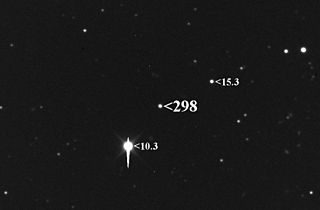
The Baptistina family is an asteroid family of more than 2500 members that was probably produced by the breakup of an asteroid 170 km (110 mi) across 80 million years ago following an impact with a smaller body. The two largest presumed remnants of the parent asteroid are main-belt asteroids 298 Baptistina and 1696 Nurmela. The Baptistina family is part of the larger Flora clan. It was briefly speculated that the Chicxulub impactor was part of the Baptistina family of asteroids, but this was disproven in 2011 using data from the Wide-field Infrared Survey Explorer (WISE).

1419 Danzig is a highly elongated Flora asteroid from the inner regions of the asteroid belt. It was discovered on 5 September 1929, by German astronomer Karl Reinmuth at Heidelberg Observatory in southwest Germany. The stony S-type asteroid has a rotation period of 8.1 hours and measures approximately 14 kilometers in diameter. It was named for the city of Gdańsk.
The Augusta family is a small asteroid family in the inner asteroid belt according to a HCM-study conducted by Italian astronomer Vincenzo Zappalà and colleges in 1995. The largest members of this family include 254 Augusta and 5535 Annefrank. In this study, a total of 23 members were identified out of a small data set of 12,487 asteroids. A more recent HCM-study by Nesvorný in 2014 no longer includes this family.
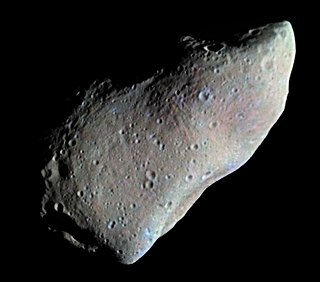
951 Gaspra is an S-type asteroid that orbits very close to the inner edge of the asteroid belt. Gaspra was discovered by Russian astronomer G. N. Neujmin in 1916. Neujmin named it after Gaspra, a Black Sea retreat that was visited by his contemporaries, such as Gorky and Tolstoy.








